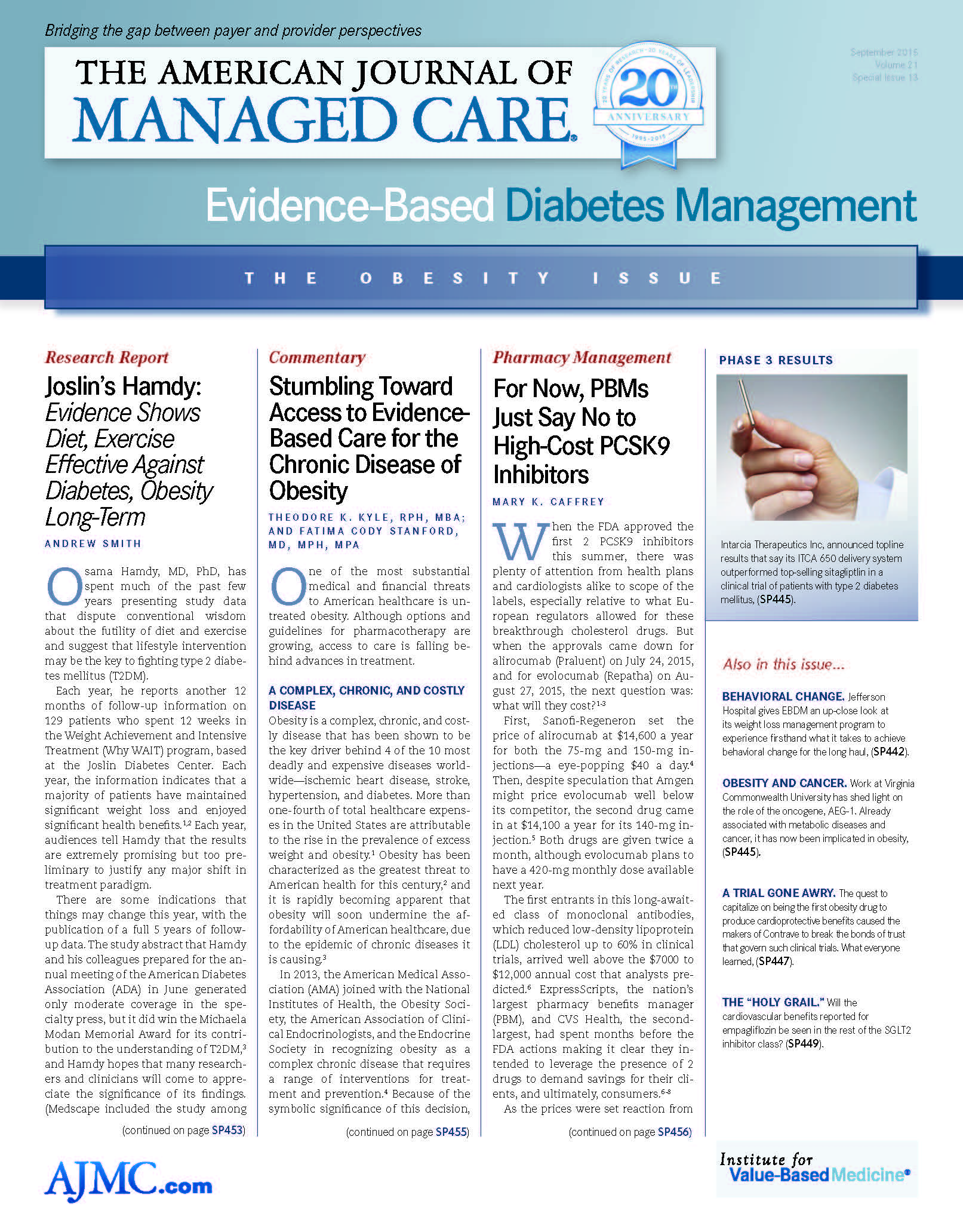- Center on Health Equity & Access
- Clinical
- Health Care Cost
- Health Care Delivery
- Insurance
- Policy
- Technology
- Value-Based Care
Survey Finds Young Patients With Diabetes Getting Fewer Eye Exams Than Older Patients
Younger patients and those newly diagnosed were more likely to not receive eye exams than older persons with diabetes.
Guidelines from the American Diabetes Association (ADA) call for those with the disease to get an eye exam at least every year—and no less frequently than every 2 years—to watch for changes that could signal the onset of diabetic retinopathy.1 Yet despite the risk of diabetic retinopathy, which could progress to diabetic macular edema or blindness, data reported August 5, 2015, by the National Center for Health Statistics, a division of the CDC, found that only about half of those diagnosed with diabetes in the past 5 years had seen an eye specialist in the past 12 months.2
According to the data from the 2012-2013 National Health Interview Survey, the likelihood of seeing an “optometrist, ophthalmologist, or eye doctor” increased with age or the number of years since diagnosis. However, the CDC bulletin suggests that young adults with diabetes are putting off health screenings and therapeutic services that could help them avoid more costly care in the future.2 Approximately 51.6% of those diagnosed with diabetes in the previous 5 years had visited an eye specialist within the past 12 months, compared with 57.3% of those diagnosed between 5 and 10 years ago, and 61.2% of those diagnosed more than 10 years ago.
Data showed the following breakdown by age: For those 18 to 39 years old, 38.2% had been seen in the past 12 months; for those aged 40 to 64 years, 53.8% had been seen; and 66.5% of those 65 years and older had been seen. When stratified by current age, there were no significant differences by years since diagnosis in the percentage who visited an eye specialist in the 18 to 39 or 65 and over age groups. In the 40 to 64 age group, those who had seen an eye specialist were much more likely to have been diagnosed 10 years ago or more (58%) than those diagnosed within the past 5 years (49%).
According to the National Eye Institute (NEI), diabetes is the leading cause of adult blindness, but those with proliferative retinopathy can reduce their risk of blindness by 95% with timely treatment and followup care. The key, according to NEI and ADA, is getting checked regularly and spotting deteriorating blood vessels early.3
References
1. Eye care. American Diabetes Association website. http://www.diabetes.org/living-with-diabetes/complications/eye-complications/eye-care.html. Updated April 7, 2015. Accessed August 6, 2015.
2. Villarroel MA, Vahratian A, Ward BW. Any visit to the eye doctor in the past 12 months by age: United States 2012-2013. CDC Division of Health Interview Statistics. CDC website. http://www.cdc.gov/nchs/data/hestat/eye_doctor/visit_to_eye_doctor_2012-2013.pdf. Published August 5, 2015. Accessed August 6, 2015.
3. Facts about diabetic eye disease. National Eye Institute website. https://nei.nih.gov/health/diabetic/retinopathy.Updated June 2012. Accessed August 6, 2015.

Exploring Pharmaceutical Innovations, Trust, and Access With CVS Health's CMO
July 11th 2024On this episode of Managed Care Cast, we're talking with the chief medical officer of CVS Health about recent pharmaceutical innovations, patient-provider relationships, and strategies to reduce drug costs.
Listen
Managed Care Reflections: A Q&A With Laurie C. Zephyrin, MD, MPH, MBA
November 12th 2025To mark the 30th anniversary of The American Journal of Managed Care, each issue in 2025 includes a special feature: reflections from a thought leader on what has changed—and what has not—over the past 3 decades and what’s next for managed care. The November issue features a conversation with Laurie C. Zephyrin, MD, MPH, MBA, senior vice president for achieving equitable outcomes at the Commonwealth Fund. This interview has been edited for length and clarity.
Read More

